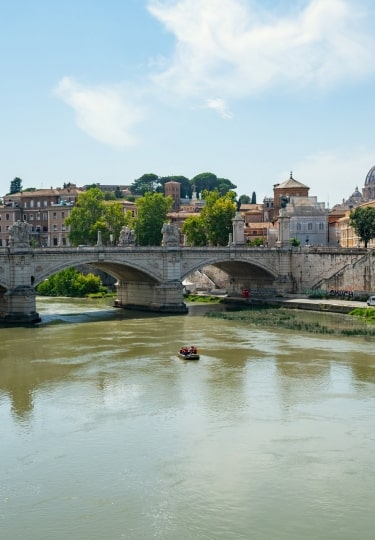It’s surprisingly easy to uncover Rome off the beaten path, despite most of the paths, vicoli, and vias of the Eternal City having been beaten smooth and shiny long ago. And best of all, you often don’t have to wander too far from the historic center.
Turn left at the bottom of the Spanish Steps or slip between a monastery and an ancient racecourse and you’ll encounter lesser-known treasures and more delicate, intimate insights into this storied capital.
Here is a guide to some of the best of Rome’s off-the-beaten-track destinations.
Appian Way
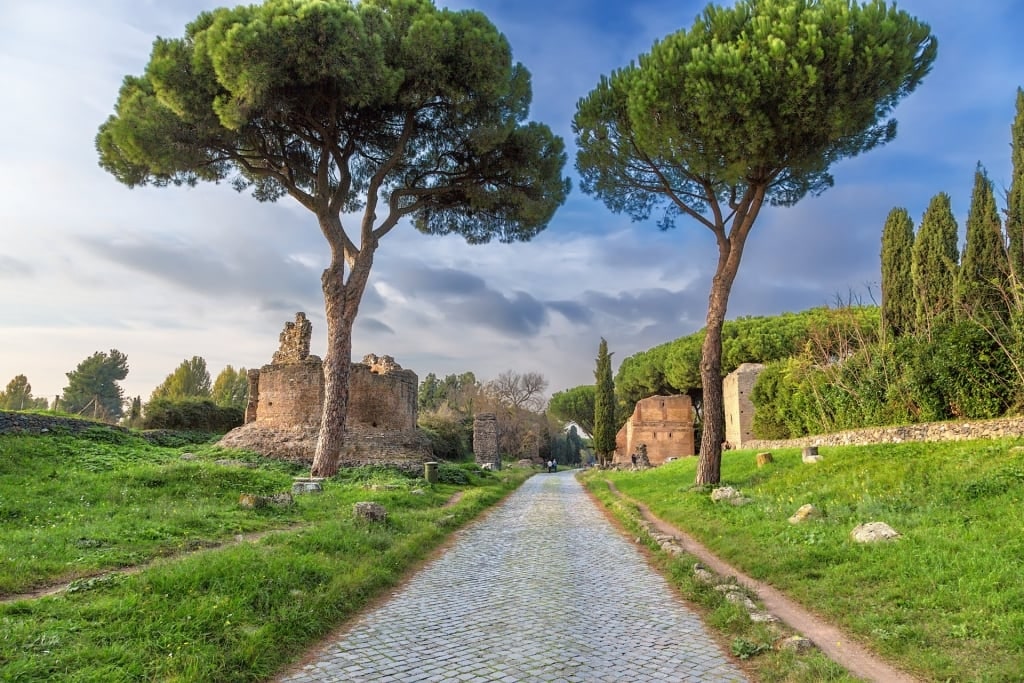
Appian Way
For the Roman poet Horace, the Appian Way was no less than the “queen of long-distance roads”. This epic infrastructure achievement by the Roman Republic arrowed out of Rome for 350 miles towards Brindisi on the southeast coast. Its name was derived from the consul who laid (not personally) the first 55 miles of characteristically straight road in 312 BC.
Inside the city, Via Appia Antica has had some needed restoration work while the first three miles are still in use by the Fiat 500s and Vespas of modern-day Rome. The remainder, with its road surface of interlocking basalt slabs leading out into the countryside, is fairly traffic-free and wonderful to stroll or cycle.
But it’s more than just a quiet walk away from the hubbub. This memory lane has witnessed some momentous things: Spartacus and his army of slave rebels were crucified along its route in 71 BC. You’ll also find a number of Roman ruins, including some significant Christian catacombs as well as a museum about the Aurelian Walls.
Baths of Caracalla
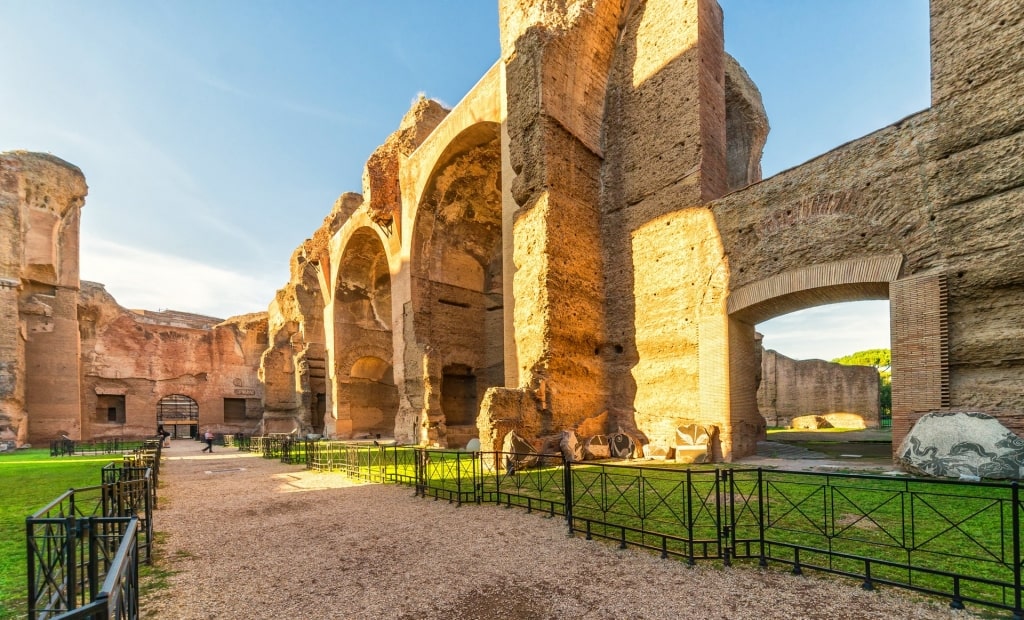
Baths of Caracalla
When the invading Goths cut off the water in AD 537, everyone had to grab togas and beat a hasty retreat. Prior to this, the Baths of Caracalla was the city’s second-largest bathing complex. Its extensive grounds included gardens, two gyms, and a library.
Its monumental ruins are striking to visit, even within city limits that include iconic Rome landmarks such as the Roman Forum and profound Pantheon. In the summer, the site is an emotive backdrop for opera concerts and was also the gymnastics venue for the 1960 Summer Olympics. And while, in its heyday, it pulled in the crowds, it’s relatively quiet today.
You’ll find it a short walk southeast of the serene Circus Maximus. The baths’ ruined reddish-stone corridors and restored underground spaces, where slaves toiled to keep the water warm and pumping, are free to wander. And you’ll happen across fragments of elegant mosaics, abandoned as if the goths decided they were just too heavy to loot.
San Clemente Basilica
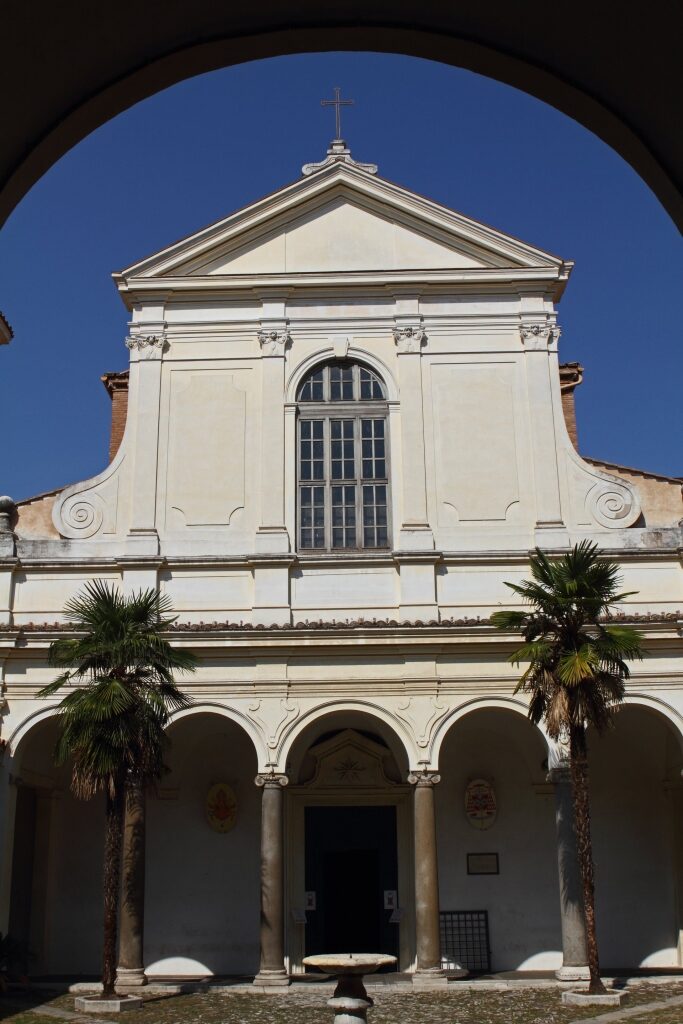
San Clemente Basilica
The Russian stacking doll of Rome’s off-the-beaten-path sights, San Clemente Basilica is an archaeological treasure.
Under ten minutes’ walk east of the Colosseum, the basilica, dedicated to Pope Clement I, is an exemplar of a kind of peculiarly Italian archaeological pick ‘n’ mix. Add up all its remarkable pieces, and the basilica acts as a visible history of Rome from the commencement of Christianity right up to the Middle Ages.
The visible building dates back to medieval times, while within you’ll find a Roman villa with, extraordinarily enough, water still trickling through its sewage system. Descend into the damp below-stairs of the sacristy, you’ll discover the fourth-century church sequestered beneath with its 2nd-century mosaics and traces of Roman-era floor.
Trastevere
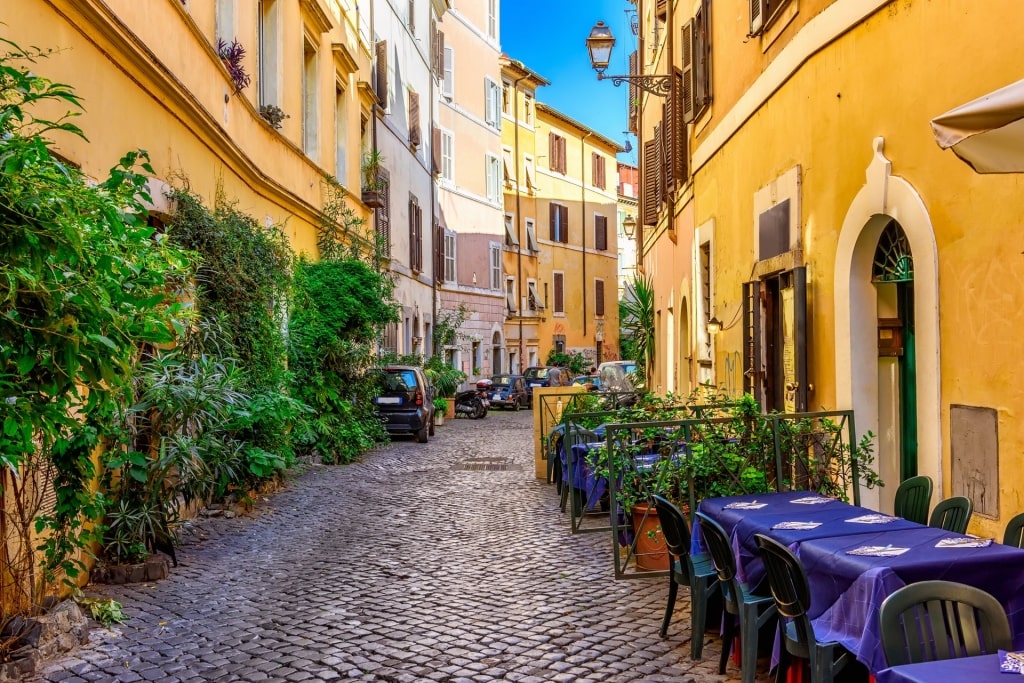
Trastevere
Stroll over the graceful arches of the 15th-century Ponto Sisto bridge away from the helter-skelter of the historic center to Trastevere. This medieval corner of the city has gentrified away from its working-class origins into an attractive bohemian quarter with lively nightlife. By day it’s a relatively central Rome off-the-beaten-path oasis of calm.
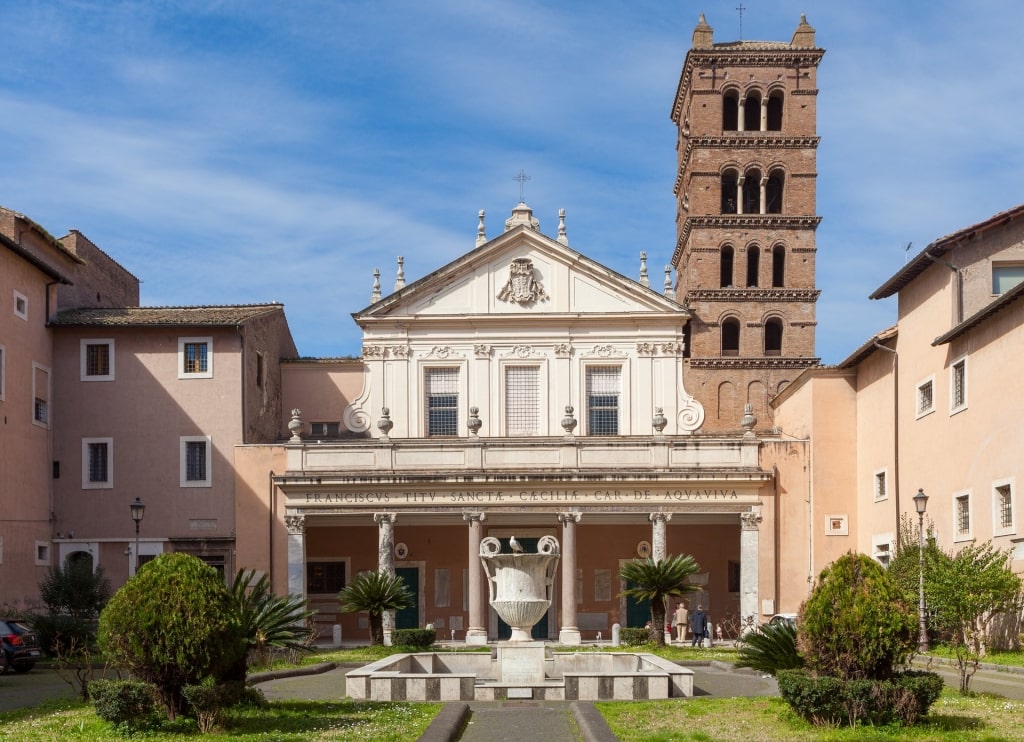
Basilica di Santa Cecilia
Its web of cobbled back streets, hung with strands of ivy and laundry fluttering in the warm breeze, contain some very worthwhile experiences. Step inside the Renaissance Villa Farnese. Peruse the mosaics in Basilica di Santa Cecilia. Or ensconce yourself in the lush biodiverse Orto Botanico.
At evening velvets the sky, join the Romans seeking the local trattorias’ quality cacio e pepe (pasta with parmesan and black pepper). Find a table perched on the cobbles for some quality repast and equally good people watching.
Read: What to Eat in Rome
Capuchin Crypt
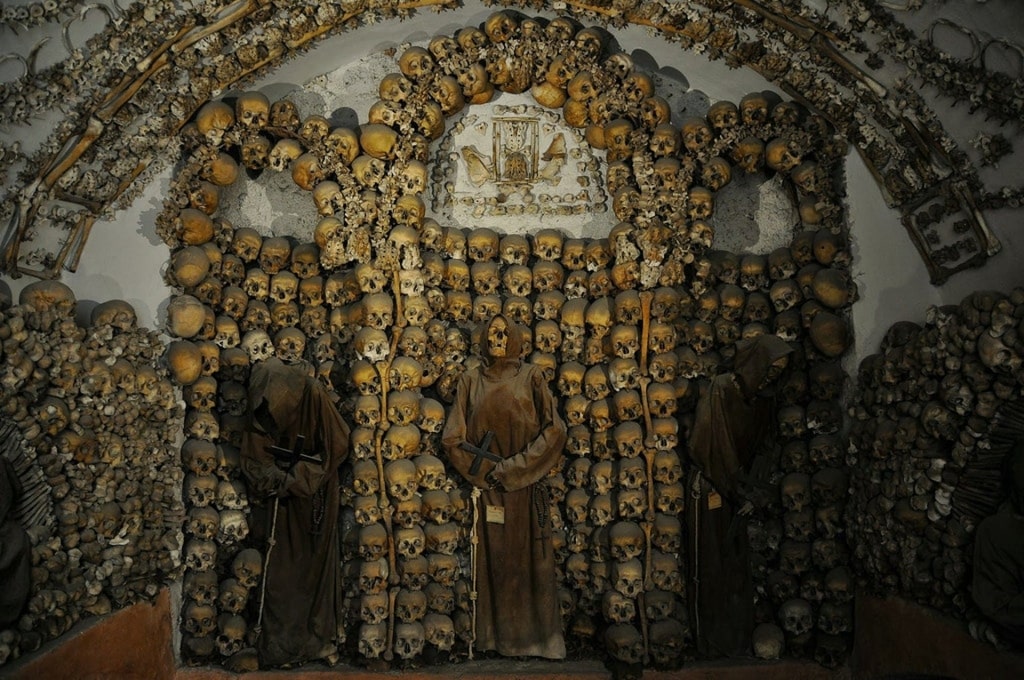
Capuchin Crypt Photo by JvL on Flickr, licensed under CC BY 2.0
There’s nothing like Rome off the beaten path with a frisson of the macabre about it, and, for that matter, there’s nothing else quite like the Capuchin Crypt.
This ossuary beneath the church of Santa Maria della Concezione dei Cappuccini, near Piazza Barberini on the outskirts of the historic center, contains the skeletal remains of over 3,700 Capuchin friars. But it’s not just the quantity of skeletons that makes this place so astonishing; it’s how these skeletons are applied as grisly interior decoration.
Stepping onto the ossuary’s floor, the soil beneath imported from Jerusalem, you’ll proceed through six rooms with names such as “the Crypt of the Pelvises”. You’ll see skeletal pieces frame a bony depiction of Jesus raising Lazarus from the dead. In this unforgettable place, you’ll also see stacks of skulls, as well as mummified friars arranged in the attitude of sleep.
Rose Garden
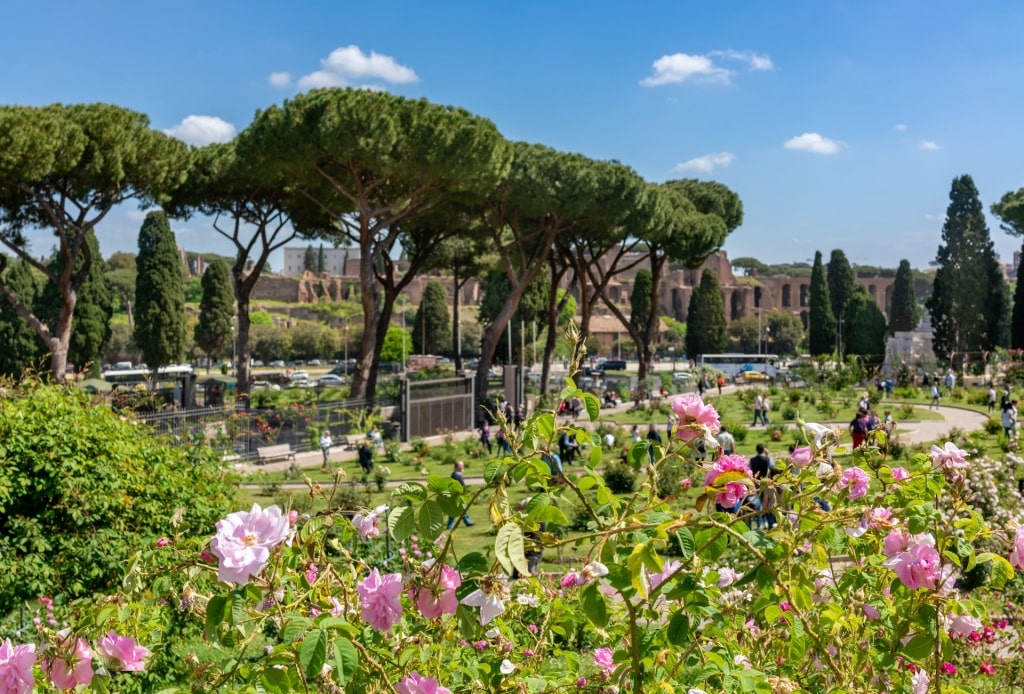
Rose Garden
The Roseto Communale, the city’s public rose garden, sits on the eastern side of the Aventine Hill on Via di Valle Murcia. Adjacent to the Circus Maximus, this sweet-smelling reserve offers both stunning views over the city and 1,200 varieties of rose to sniff.
The original Italian garden, created in the 1930s by an American countess, was destroyed in World War II. Where it’s planted today is its second site, Rome’s former Jewish cemetery. Today’s park pays homage to the former purpose of the land, with the umbrella pine-shaded pathways tracing Jewish religious symbols amid the plantings.
The paths loop through two main sections. There’s an upper area with blooms from classic varietals, and a lower section with roses that are part of a competition that, every May, attempts the simple task of judging the most beautiful rose in all of Rome. Consider yourself an unofficial judge.
Le Domus Romane di Palazzo Valentini
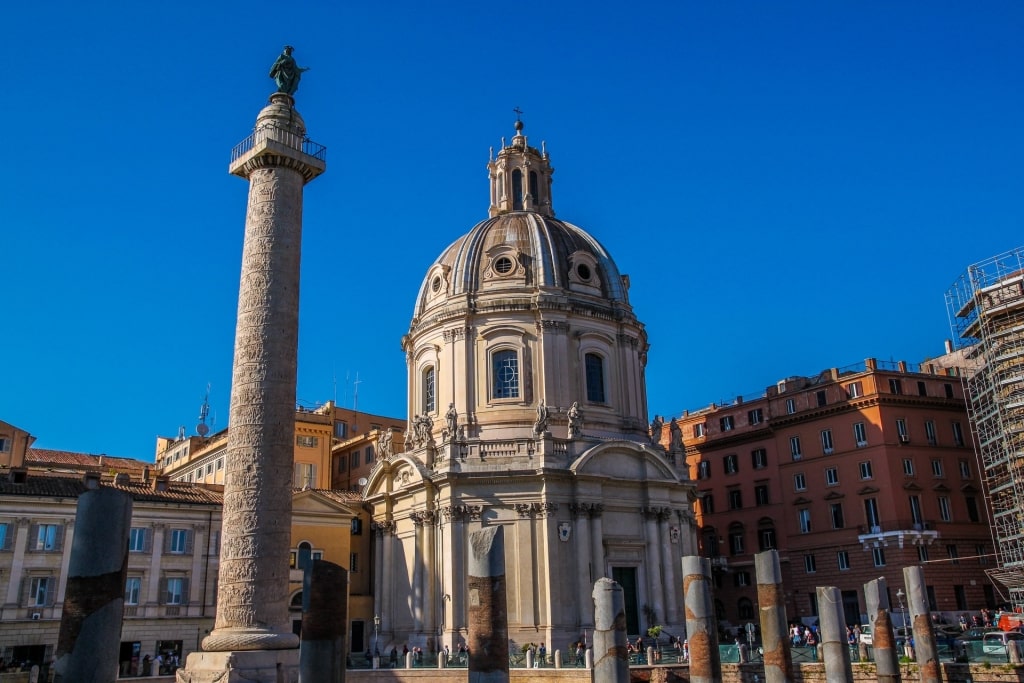
Le Domus Romane di Palazzo Valentini
A fabulous, lesser-known archaeological site, Le Domus Romane contains two Imperial-era Roman houses beneath the impressive Palazzo Valentini.
Preserved beneath the palazzo for centuries, these Roman houses were finally uncovered in 2007. The careful excavation exposed a pair of sumptuous residences with mosaics and marble floors wonderfully well preserved.
Bringing the entire thing to life is a superb multimedia tour, lasting about an hour, that introduces color, light, and comprehension to the ruined interior that helps you to experience life in the house as it would have been for the previous occupants. There’s also an absorbing presentation halfway through the visit that takes you inside ancient Rome.
Esposizione Universale Roma
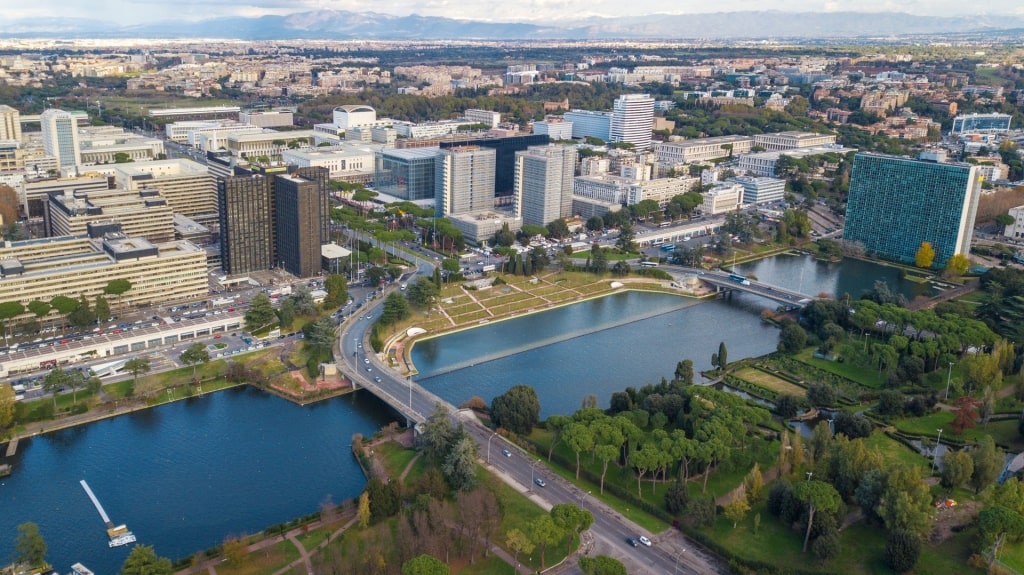
Esposizione Universale Roma
A repository of architectural curios on the southern edge of the city, the Esposizione Universale Roma (World’s Fair of Rome) was created by Mussolini to celebrate the 20th anniversary of the birth of Italian fascism. This new suburb was also intended to grow Rome’s city limits with the aim of absorbing the port of Ostia into a new “third Rome”.
Before the site could fulfill its function, World War II intervened. However, within its roughly pentagrammic contours, the striking neo-classicist and rationalist buildings remain, and are in use today. The fashion house Fendi has its HQ in the rationalist masterpiece of the Palazzo della Civiltà Italiana, with art exhibitions often held on its travertine-clad ground floor.
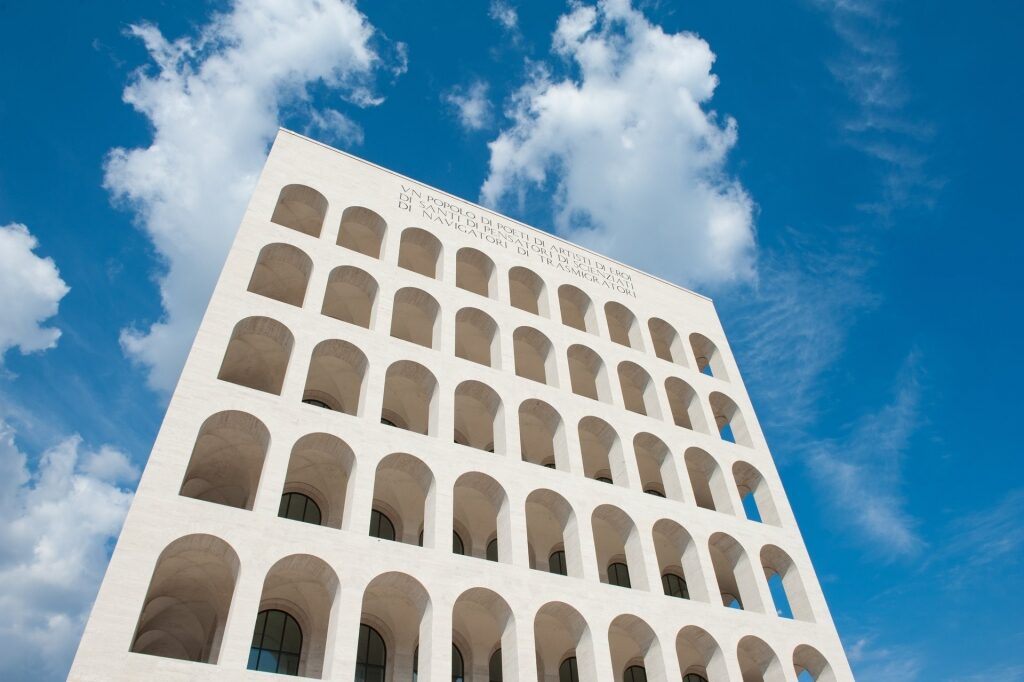
Palazzo della Civiltà Italiana
You’ll notice distinctly fascist ornamentation, such as a stone relief of Mussolini astride a horse intended to imitate Emperor Augustus. However, in and around the imposing dimensions of the fascist architecture, you’ll also encounter intriguing buildings with no shadowy history attached such as the La Lama black skyscraper and the remarkable Fuksas-designed Rome Convention Centre, La Nuvola.
Santa Maria Maggiore Basilica
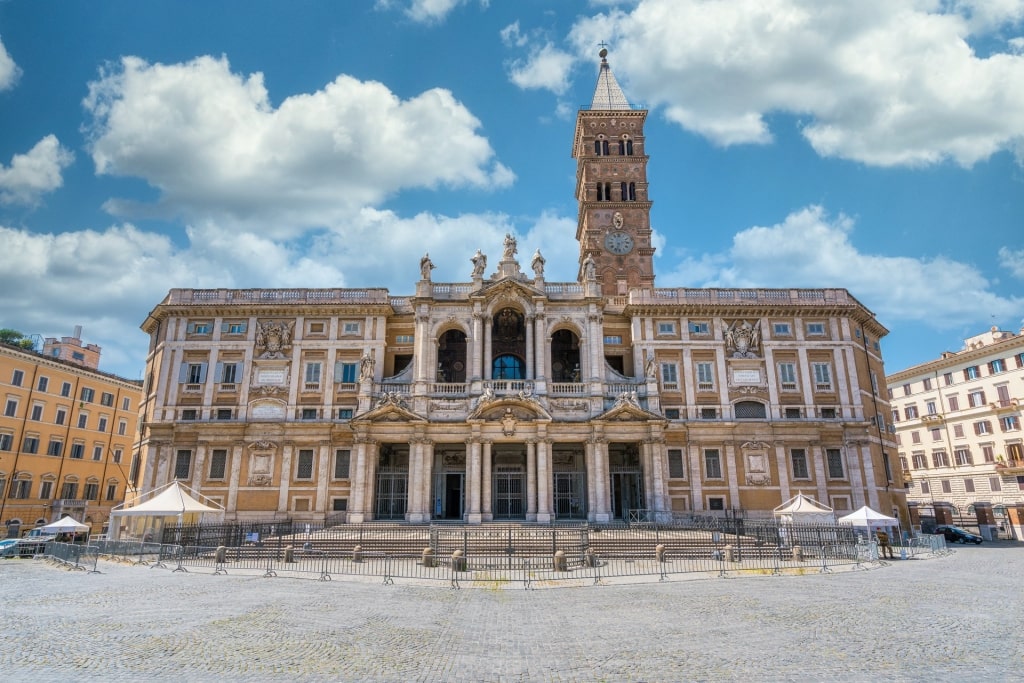
Santa Maria Maggiore Basilica
One of four major basilicas in the city, Santa Maria Maggiore is believed to be the largest church dedicated to the Virgin Mary in Rome. But it’s more than just a question of dimensions: Santa Maria Maggiore also offers you an archaeological trifle to dig into with each layer as delicious as the last.
Described as a “summary of the most important stages of Christian art in Rome”, the Roman church was first constructed atop a pagan temple dedicated to the goddess Cybele. The construction was ordered by Pope Liberius who, so the story goes, consulted directly with the Virgin Mary on the structure’s appearance.
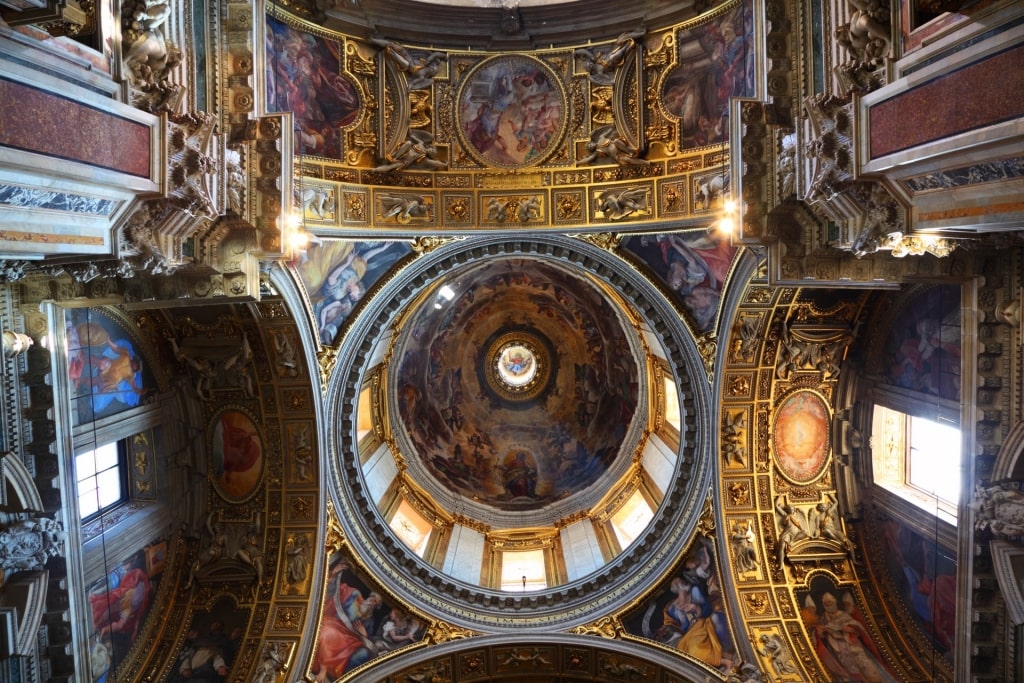
Santa Maria Maggiore Basilica
Such an ancient building naturally acquires a wealth of architectural styles, and the juxtapositions can be striking. Medieval mosaics, ionic Roman columns, and a Renaissance-era wood ceiling plastered in New World gold all vie for your attention.
Throw in sculptor Lorenzo Bernini’s final resting place, a hidden spiral staircase, and even a piece of Jesus’s cot, and you have a Rome off-the-beaten-path gem.
Tiber River Rafting
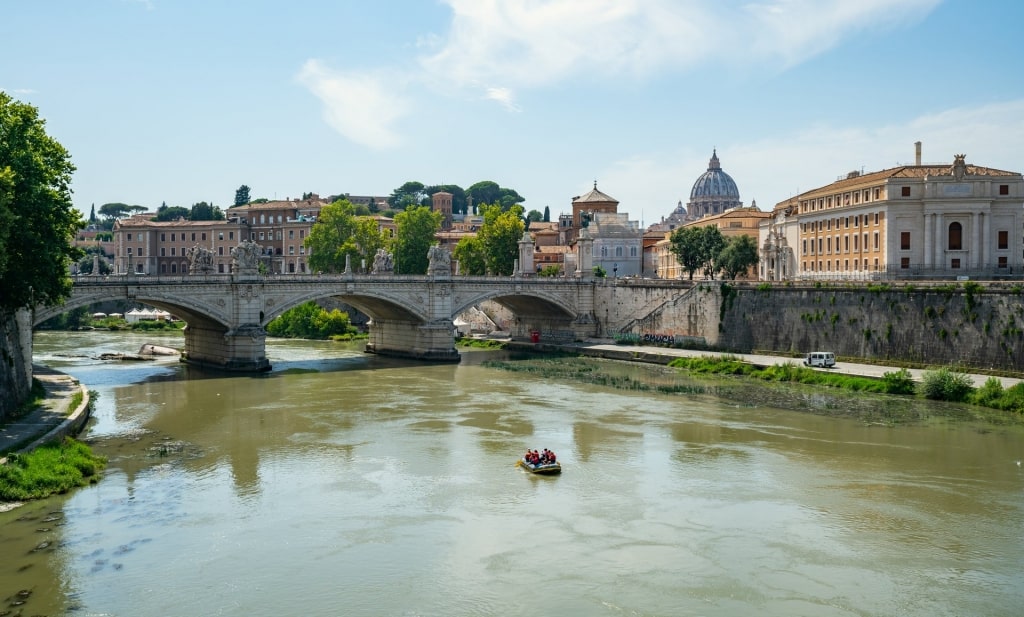
Tiber River
The Tiber, by the time it reaches Rome, is nearly at its end after wending its way down from the Apennine mountains before eventually emptying into the sparkling Tyrrhenian Sea. The river is even part of the city’s origin myth, where a she-wolf rescued Romulus and Remus from its waters.
Today, as the central waving spine of the city, its calm waters pass often unheeded by the busy populace. If you’re traveling with kids, one of the best things to do in Rome for families is to join a river rafting excursion, you can bob along beneath Rome’s historic bridges, and enjoy the Palazzaccio and St. Peter’s Basilica from a rare, uncluttered perspective. It’s hard to get more off the beaten track in Rome than stepping into a boat.
Teatro Marcello
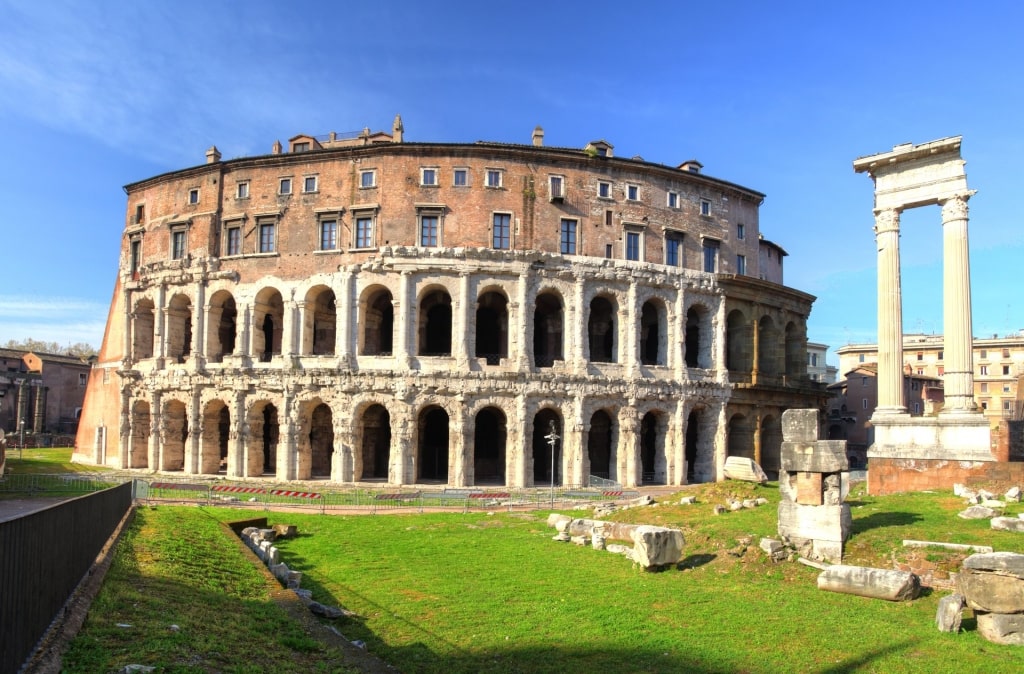
Teatro Marcello
The first-ever arena built in Rome, Teatro Marcello would act as a prototype for that iconic Roman symbol of power and moral decay, the Colosseum. However, when this 13th-century arena was built, it was intended for mythological plays rather than the grisly goings-on that debuted on the Colosseum’s sandy stage.
Besides its ancient pedigree, the site is a magnet for architecture buffs. All manner of Roman columns abound, while the theatre also acts as a showcase for the use of fired Roman brick, at the time, a new innovation inspired by the Greeks. Teatro Marcello also enjoyed a turn as an early Middle Ages fortress, while the top floor has been converted into apartments.
You can wander through this piece of Rome off the beaten path (although sadly, not the apartments). A truly special way to experience the theatre is during one of the summer concert series held within its ancient embrace.
Keats-Shelley Museum
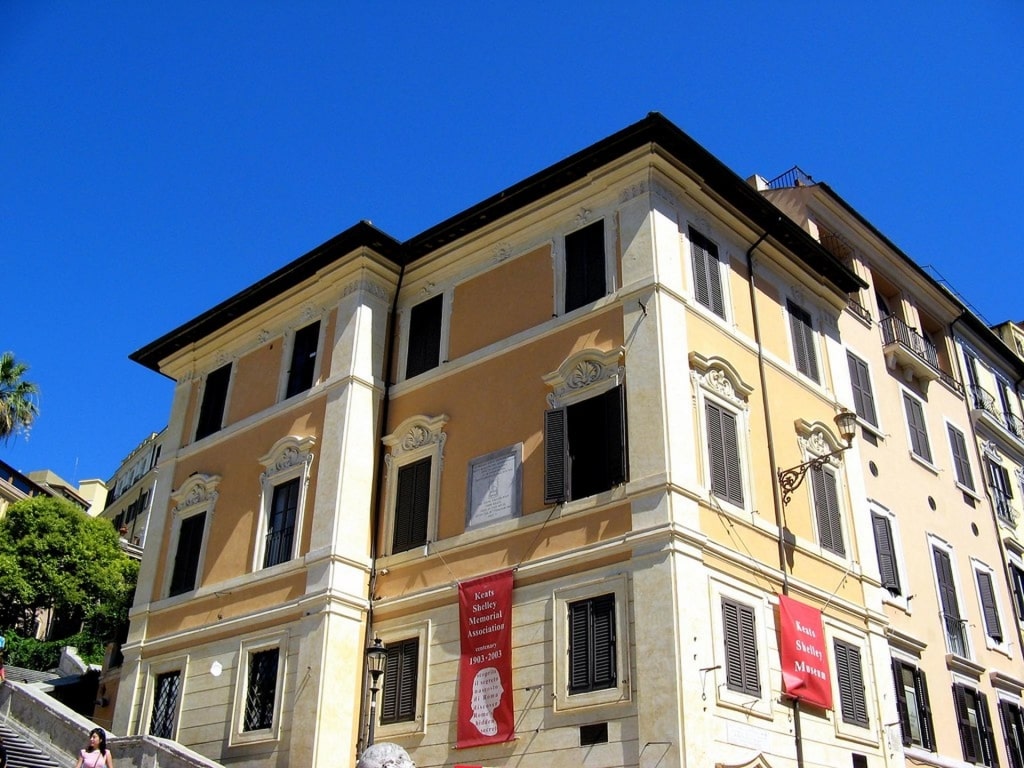
Keats-Shelley Museum Photo by HarshLight on Flickr, licensed under CC BY 2.0
One of the best museums in Rome, the Keats-Shelley Memorial House is a handsome, peach-colored building entirely overshadowed by the adjacent Spanish Steps. While most visitors moon over the admittedly stupendous stairway, surprisingly few pay heed to the world’s largest collection of literary ephemera related to the English Romantic poets tucked up nearby.
It’s also the place where Keats spent his last days in 1821 dying of tuberculosis at the tender age of 25. Within the book-lined rooms, Keat’s bedroom has remained unchanged for two centuries. The library here includes leatherbound first editions from writers such as Oscar Wilde, and you’ll see portraits of Keats painted by his friend and companion, Joseph Severn.
Besides these treats, and Frankenstein author Mary Shelley’s writing desk, this is also a haven of tranquility amid one of Rome’s most frantic areas. Indulge in it by having a Babington’s cream tea on the museum’s tiny terrace, with a view of the steps, the Trinità dei Monti, and the madding crowd.
Via Margutta
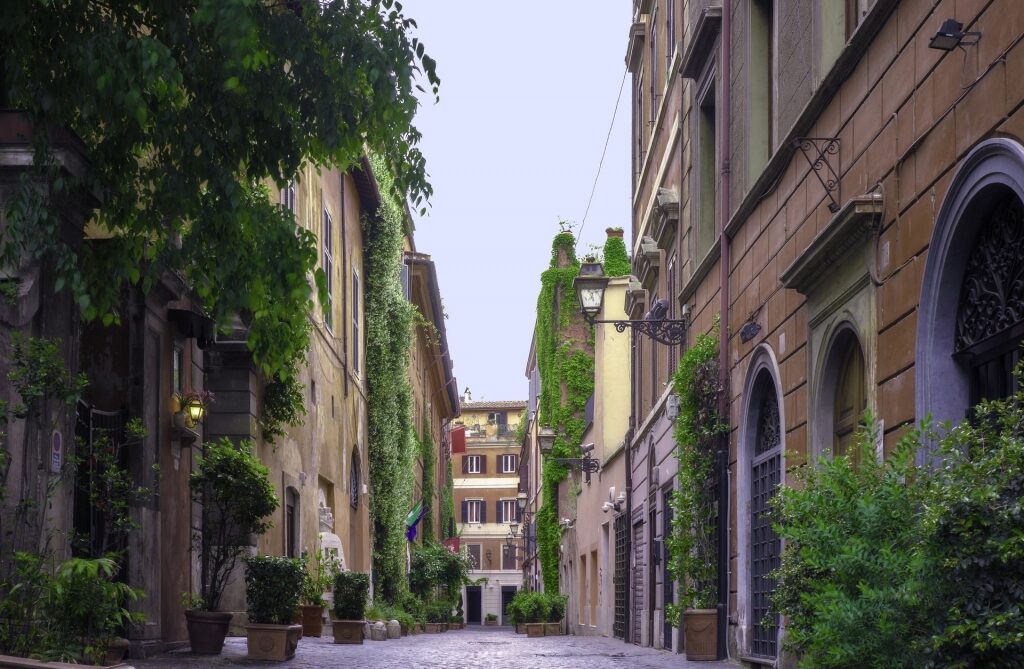
Via Margutta
Three blocks of powerhouse Roman allure, Via Margutta’s star began to rise when Hollywood turned its eye upon it and called “action!”. However, this starry street had a humble beginning as a part of the sewage system serving the nearby villas.
No whiff of this origin story remains happily, and today this ochre, palazzi-lined street is a reserve of Italian chic and glamor. Among the restaurants, antique shops, and high-end boutiques, you can spot where the stars used to live and work: Federico Fellini at 110, Picasso at number 54, and Gregory Peck as Joe Bradley at number 51. Has Rome off the beaten path ever felt quite so exclusive?
Read: Best Day Trips From Rome
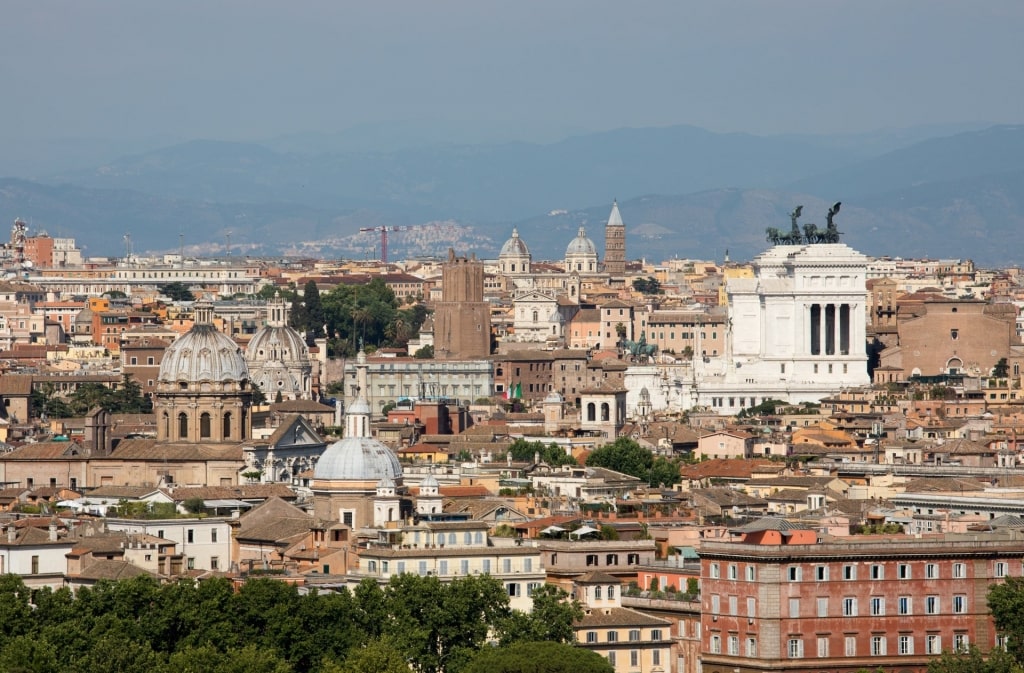
Rome
Explore Rome off the beaten path and experience the Eternal City’s matchless art, historical, and cultural heritage—not to mention its aperitivi—on a cruise to Rome. Browse cruise itineraries on our website and book a vacation to this stunning country today.
